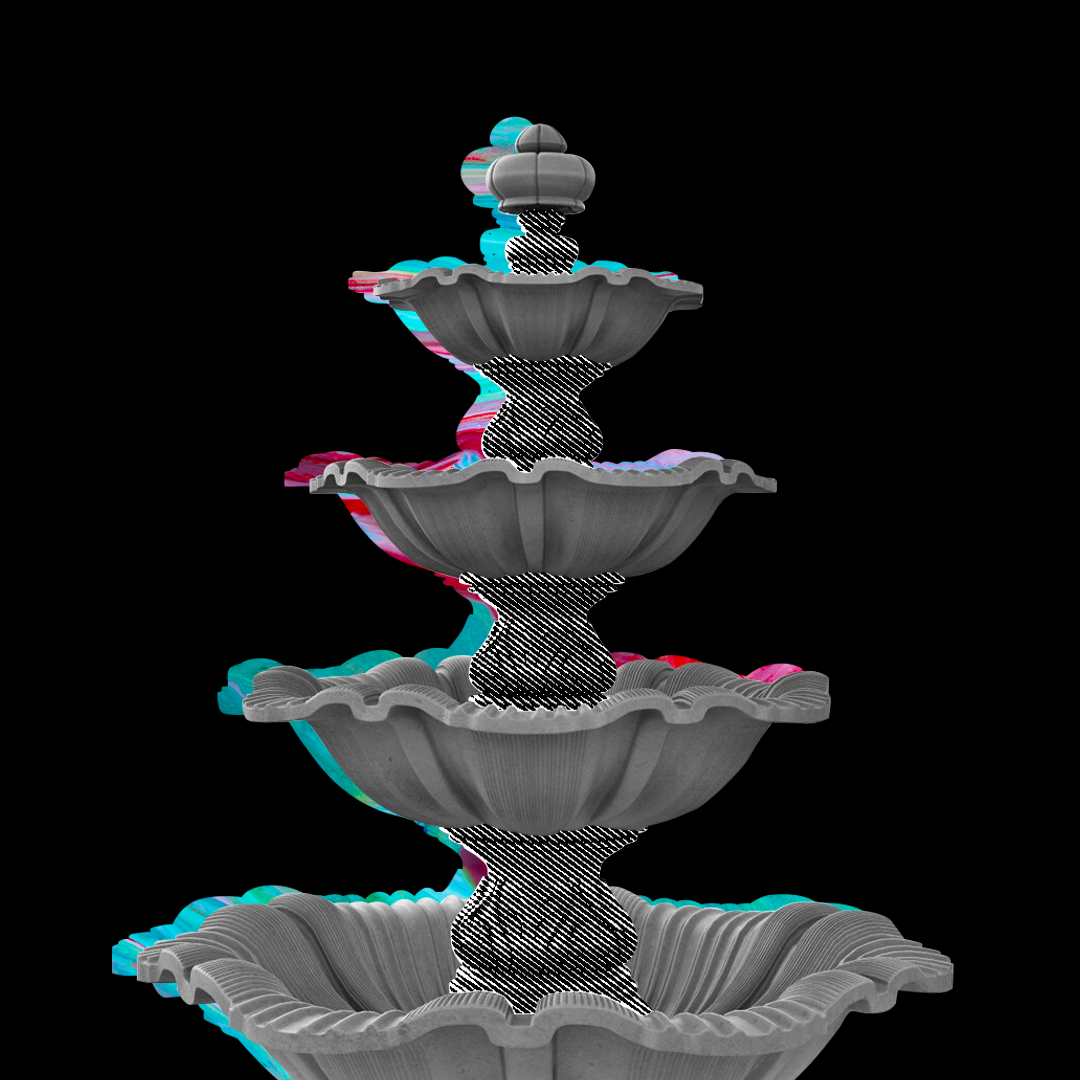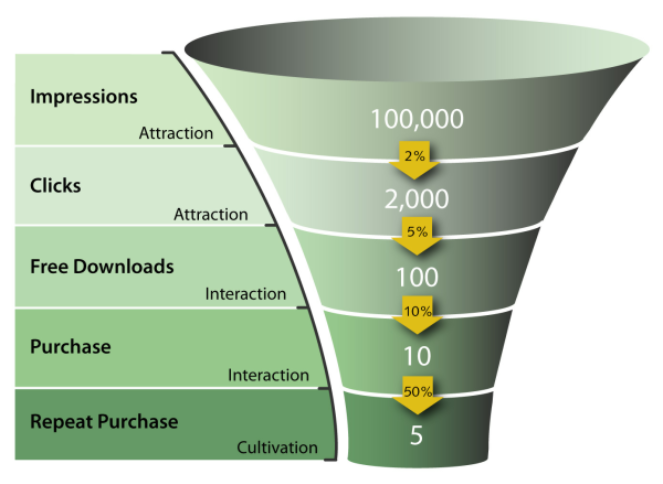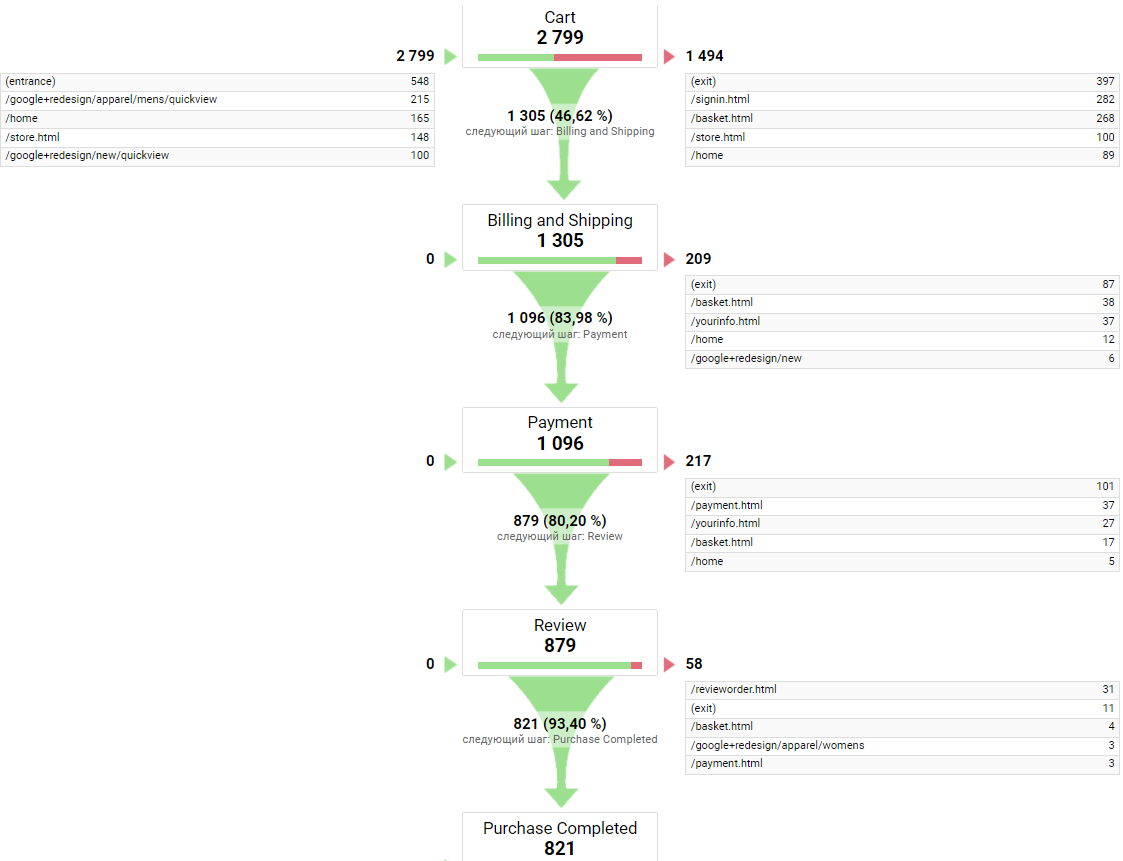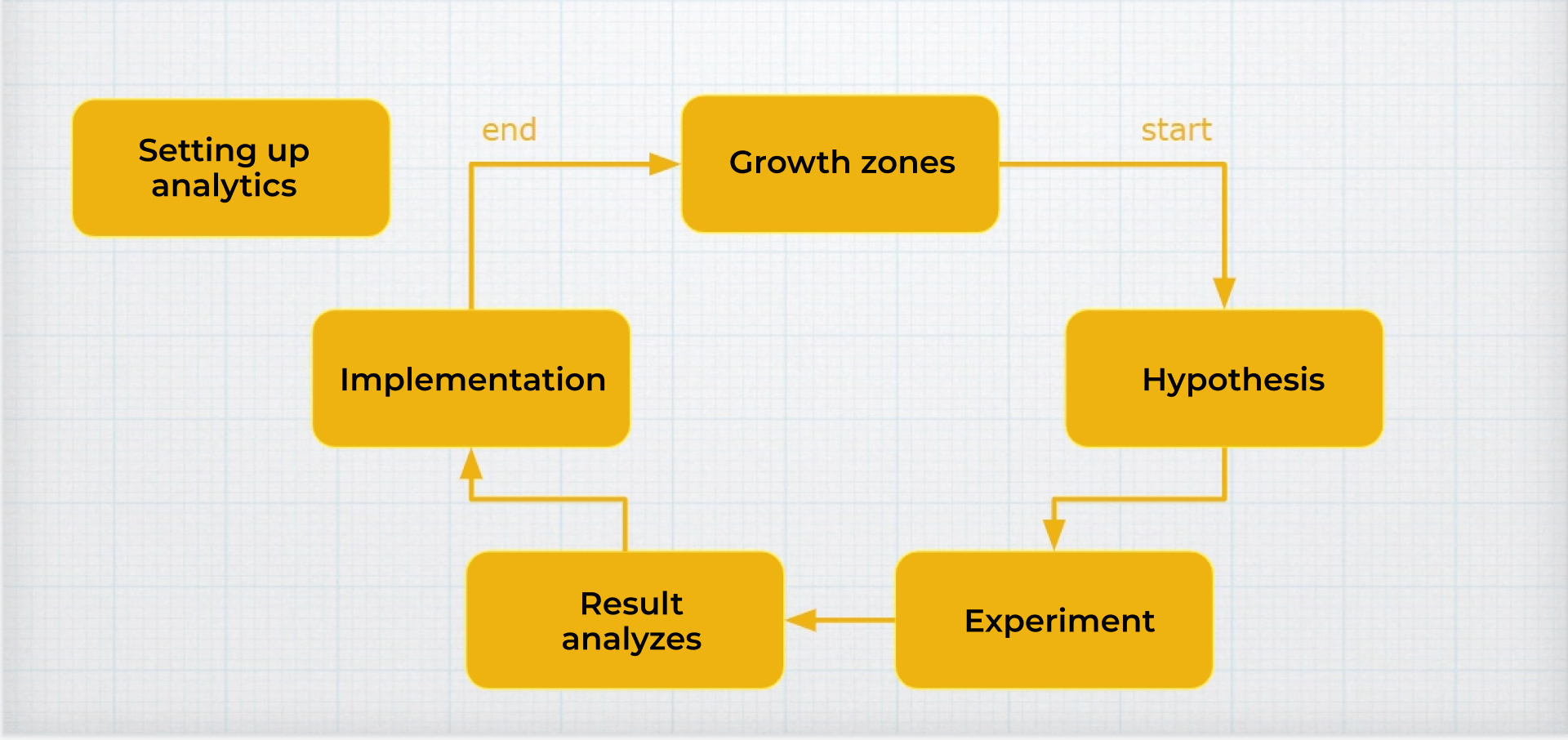An event funnel is a visualized user journey from the moment he arrives at the site to the moment he takes the action we want him to take. This diagram represents the ideal step-by-step customer journey.
How Do I Create an Event Funnel?
To make an event funnel, you should go all the way to the desired event and highlight the key moments of this path. For example, the final event is a purchase, then you should track all the user steps from the product catalogue page to the “Thank You” page. It is important not to try to fit all the actions in there, but to remove unnecessary steps as much as possible and highlight only those steps that carry a meaningful load for the business.
Tips for Creating an Event Funnel
- If you have several channels of attraction, it is advisable to make a funnel for each channel. They may have different beginnings, but the basic and final steps will be the same.
- Keep in mind that the user can move along the funnel and in the opposite direction. For example, a user has selected a product, moved on to payment and realized they forgot something else and went back.
- The same action can be placed at different stages of the funnel — for example, moving to a customized offer for the user.
- Don't try to create the perfect funnel all at once. Start by making a regular flowchart with all the important steps, and then expand it.
How to Improve the Event Funnel?
If you analyse your event funnel, you can see that a certain percentage of users drop out at each step. For example, 50% of users fill out their contact details and are ready to proceed to payment, but you only see 10% of users on the payment “Thank You” page. This means there's a problem at the data-filling stage — perhaps you only have PayPal card payment allowed, and most users don't have one. Any problem that prevents a user from taking a targeted action is a potential growth area for us.
- Look for problem areas where numerous users are leaving. Find at that point what the problem might be and fix it. To understand what the problem might be, you can use a helper service like "Hotjar" which allows you to watch how the user moves around the site.
- Count the conversion rate from one step to the next. Increasing the number of users on the site doesn't mean that the number of conversions we need increases.
- Expand the top of the funnel for more reach. This can be done with special sales offers.
- Based on the data, make hypotheses and test them. Come up with different options to improve the funnel and test them on different audiences of users, collect the data, draw conclusions and make new hypotheses, and test them again, and so on in a circle.
Conclusion
The event funnel is a very useful thing. It helps you find trouble spots on the way to achieving the main action and provides many opportunities for growth. Each business can have its own unique funnel, and so you need to create it individually for each project. Don't be afraid to test and experiment, because this is the only way to improve your performance!





